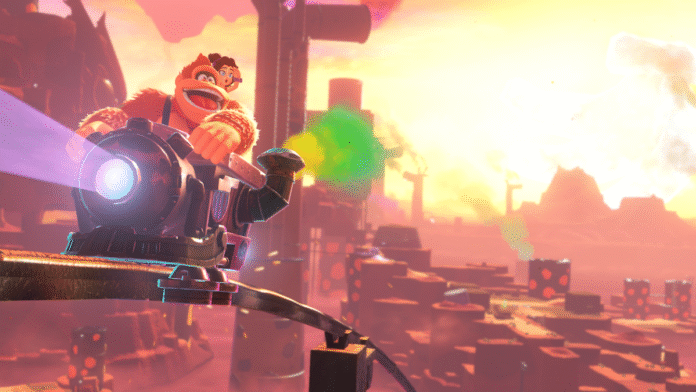Despite being a lifelong appreciator of Nintendo games, Donkey Kong as a character has never resonated with me all that much. I blame 1999’s Donkey Kong 64.
The first attempt at a 3D platformer starring Nintendo’s simian superstar came out when I was a kid with an insatiable curiosity for video games. It also sucks to an almost unbelievable degree. DK64 is a grimy and unpleasant mess, loaded with tedious collectibles that notoriously take dozens of hours to accumulate. (Don’t play Donkey Kong 64. I hated it then and I hate it now. That’s my review.)
Oh yeah, I guess I’m here to review another game, huh? Well, Donkey Kong Bananza is just about the opposite of 64 in every way that matters. The first big post-launch Nintendo Switch 2-exclusive will be a welcome reprieve from Mario Kart World for early adopters, thanks to its beautifully elegant movement mechanics, delightfully destructible environments, and a new(-ish) companion character for Donkey Kong who almost steals the show by herself.
In other words, they finally made a good 3D platformer starring Donkey Kong, and anyone who bought a Switch 2 at or around launch should probably pick it up. Mario Kart is great, but this is the Switch 2 game you’ve really been waiting for.
Free Nintendo Switch 2 upgrades for Switch 1 games are better than expected
Donkey Kong Bananza gives DK a new best friend
It’s worth it to look at their faces every now and then.
Credit: Nintendo
Bananza comes from the same internal team at Nintendo that developed Super Mario Odyssey, which is exemplified by its storytelling that prioritizes charm and good vibes over lore and dialogue.
It’s essentially a reboot for the Donkey Kong character, and he’s given a brand new design that, frankly, makes the one that’s been in use for the past 30 years look…not great by comparison. Bananza begins with DK (who is a miner in search of banana-shaped rocks) being helplessly sucked down into a world that exists beneath the planet’s surface. Before long, DK links up with Pauline, a 13-year-old human girl who rides around on his shoulder as the two dive deeper into the underworld in hopes of finding a way back up to the surface.
Yes, this is the same Pauline who was Donkey Kong’s kidnapping victim in the original Donkey Kong arcade game. No, Bananza does not take even one second to address whatever “continuity errors” you might think exist here. Nintendo doesn’t care and neither should you. They made Pauline a kid and made her friends with DK this time because they thought it would be fun. They were right.
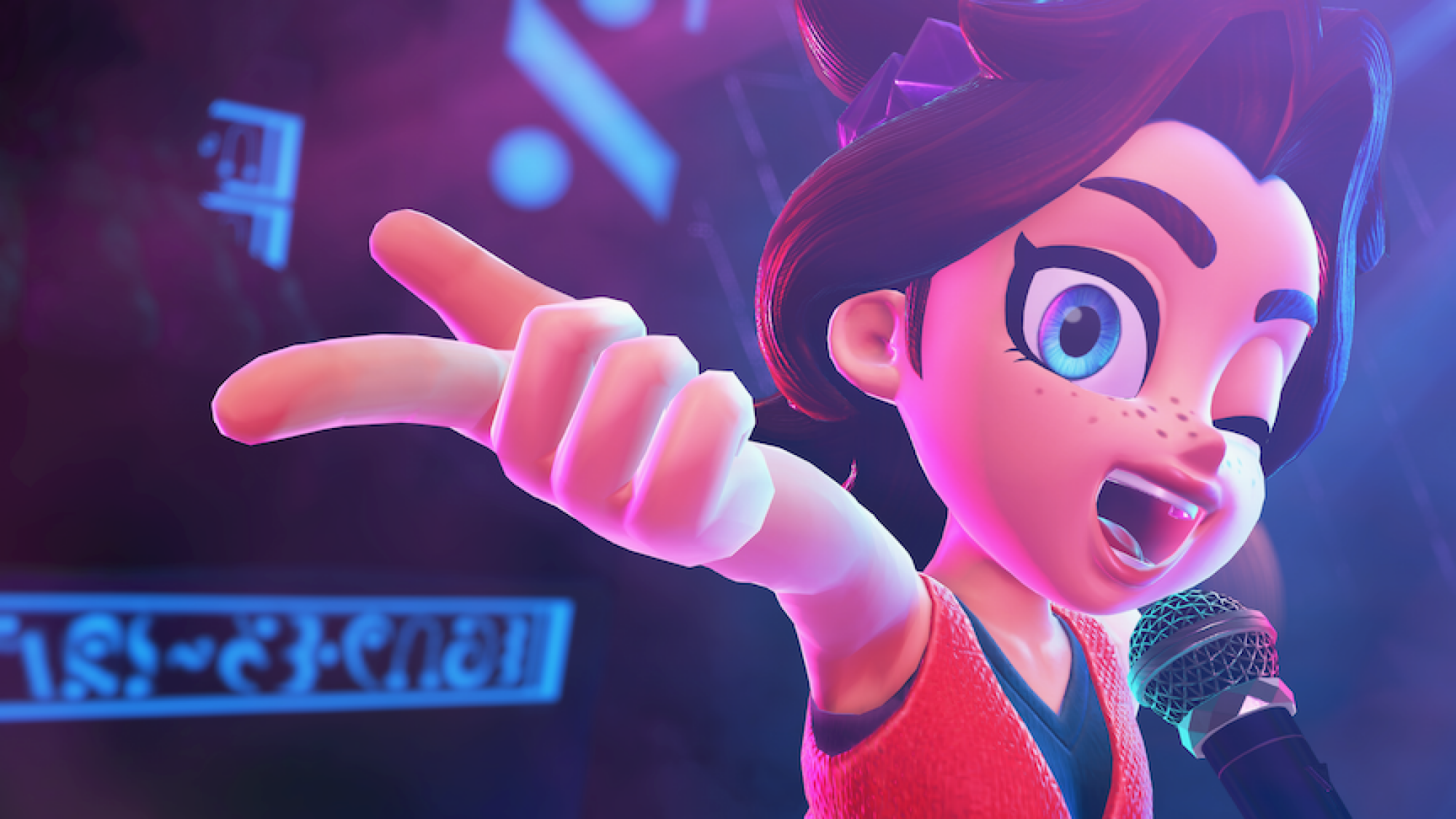
What a star.
Credit: Nintendo
As expressive and hilarious as the new Donkey Kong is most of the time, Pauline is the secret sauce that makes Bananza work on a vibes level. Giving our beloved ape a human companion who can speak for him in cutscenes and who offers goofy little insights every now and then helps add a lot of personality to the proceedings. What’s even better is that Pauline is perfectly believable as a 13-year-old girl; she feels three-dimensional, expressing a wide array of emotions throughout the story, all while occasionally cracking the kinds of corny jokes that young teens are wont to crack. Her personal journey, which revolves around her increasing confidence in her magical singing abilities, is also pretty endearing.
I hope I’m not succumbing to recency bias here, but I do think this version of Pauline is one of the best companion characters in a Nintendo game in a long time.
Bananza revels in recklessness
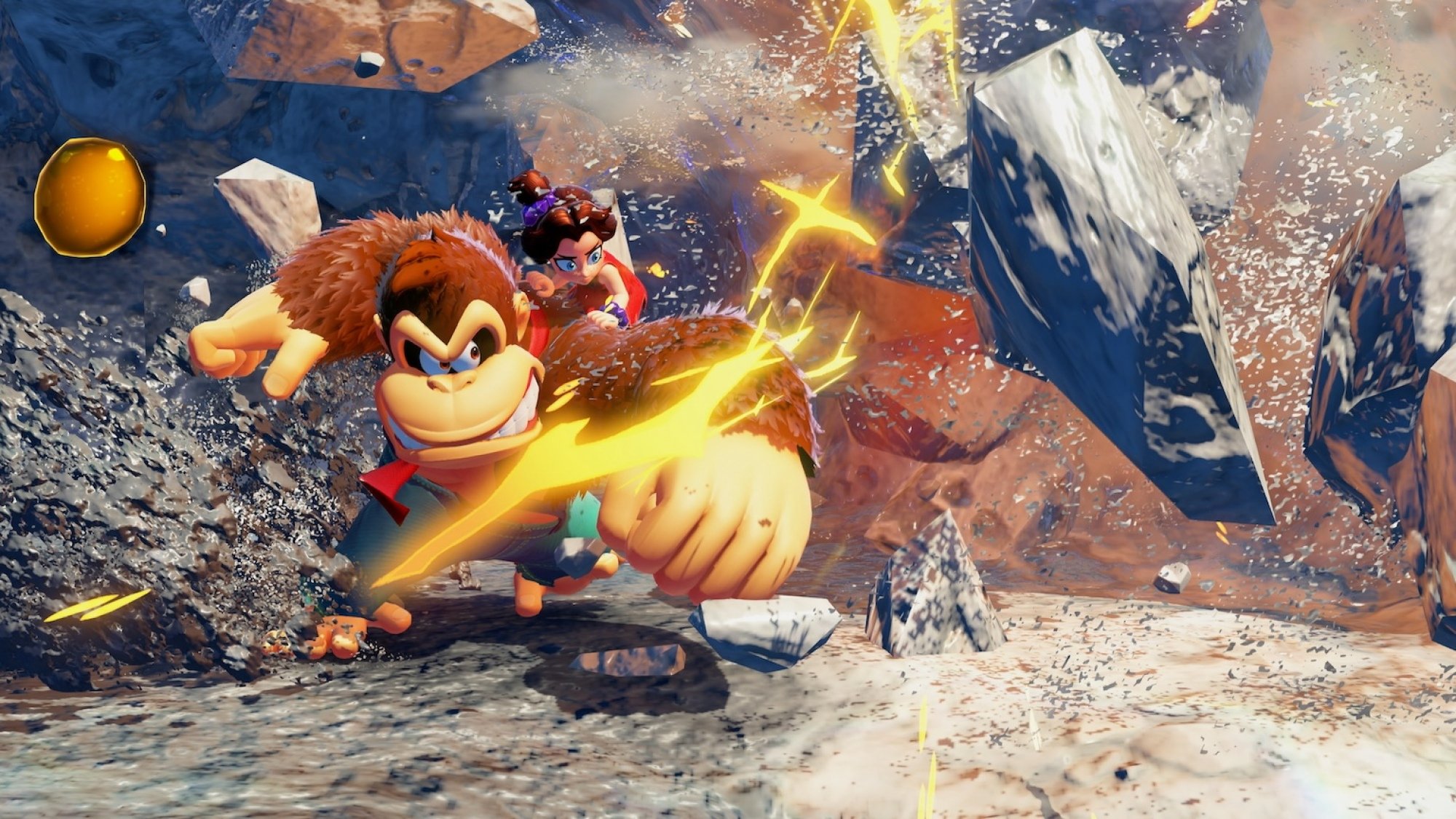
Credit: Nintendo
Of course, this is a 3D platformer, so there are only a small handful of cutscenes in Bananza and the story’s not really what anyone is here for. I am pleased to report, in that case, that the 3D platforming on offer here is airtight, with lots of room for player freedom and highly enjoyable movement mechanics.
Nintendo’s big gimmick here is that Donkey Kong can use his substantive fists to pound through sand, rock, stone, gold, and most of the other materials that make up each of Bananza’s sprawling, open-ended levels. If you know there’s a Banandium Gem (this game’s main omnipresent collectible) behind a wall that’s in front of you, most of the time, you can just punch the wall until there isn’t a wall anymore. This is one of the most self-evidently fun game mechanics I’ve seen all year. Who doesn’t love busting up levels?
That said, this could have easily gone sour. There’s another world, not far from this one, where Bananza is a confusing mess of a game full of bugs and camera problems that make its destructive gameplay burdensome rather than delightful. However, somehow, some way, the Odyssey team figured out how to make all of it just work. It’s surprisingly hard to get lost thanks to a very effective map and intuitive level design that subtly encourages the player to wreak havoc in certain areas without outright holding their hand. And if you do get a little too reckless and find yourself unable to progress, you can simply restore all the terrain you destroyed with a button in the pause menu.
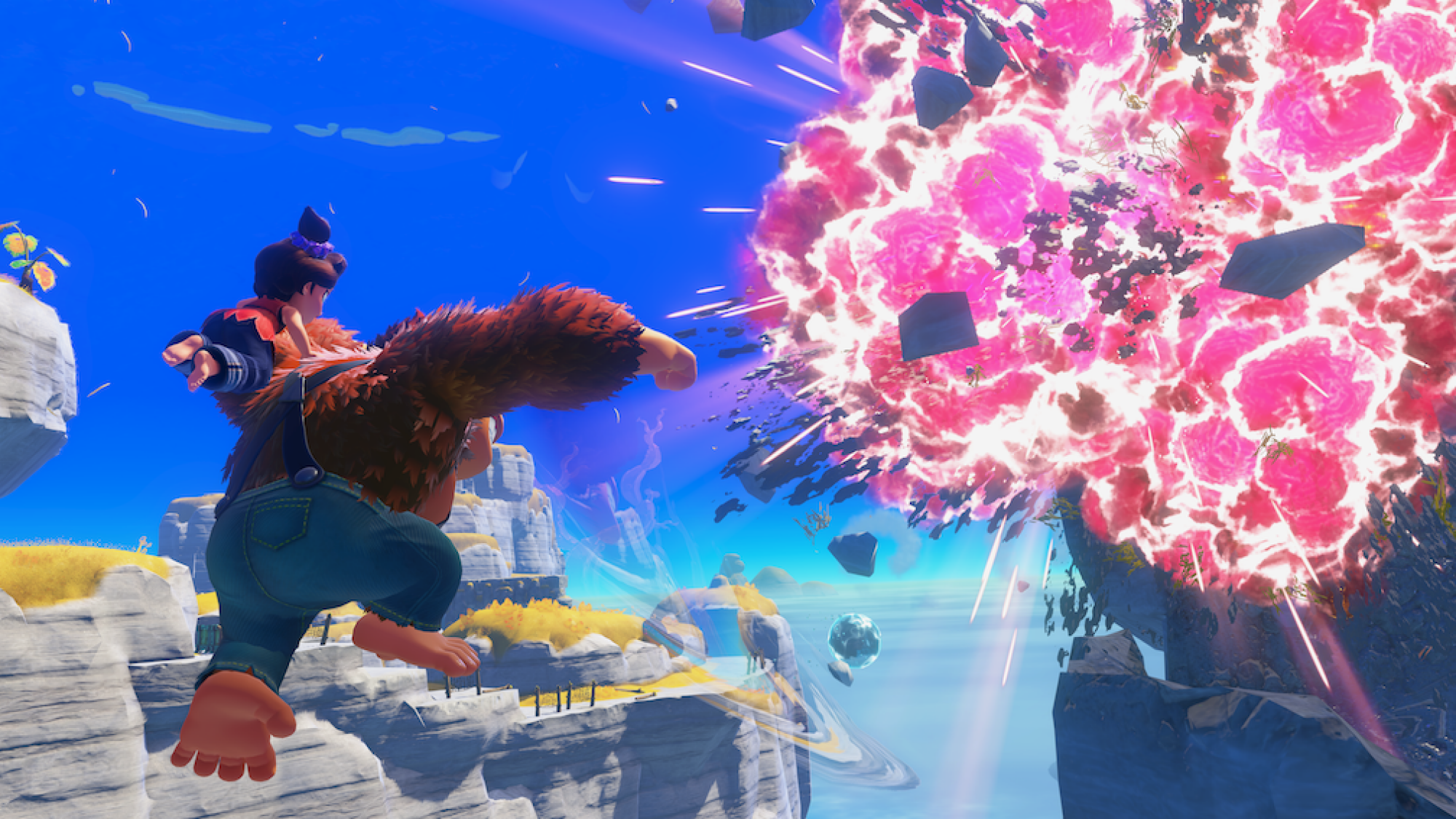
Explosions good.
Credit: Nintendo
I’m not surprised that the destructive elements of Bananza are fun, but I am pleasantly surprised that they’re as elegant as they are. There are lots of potential interactions between different materials in Bananza, as you can pick up soft dirt and throw it at hard surfaces to create platforms or harness the explosive properties of gold (don’t think too hard about it) to clear out surfaces that are too hard to punch through.
Shockingly, this never really becomes confusing at any point in the roughly 15-20 hours it takes to wrap a bow on the game. If you find yourself needing a certain material to progress, it’s always somewhere nearby. What’s more impressive is that you hardly ever need to stop and think about it, as Bananza’s visual language is clean enough that you can usually figure out what to do in any given situation just by scanning it with your eyes for a few seconds.
Combat is also a lot more fun here than it normally is in 3D platformers. You can really feel the immense weight of DK’s punches as they land on enemies, especially in situations where a punch sends an enemy careening into another enemy for a double kill. I do have one minor criticism here, though, which is that a few of the early-game boss fights are a bit too basic and easy for my liking. There were some that I beat in literally about 30 seconds. Bonanza makes up for this in the back half with some extremely good late encounters, but still, I wasn’t sold on the boss fights in the first few hours.
It’s a good time to just move around these levels
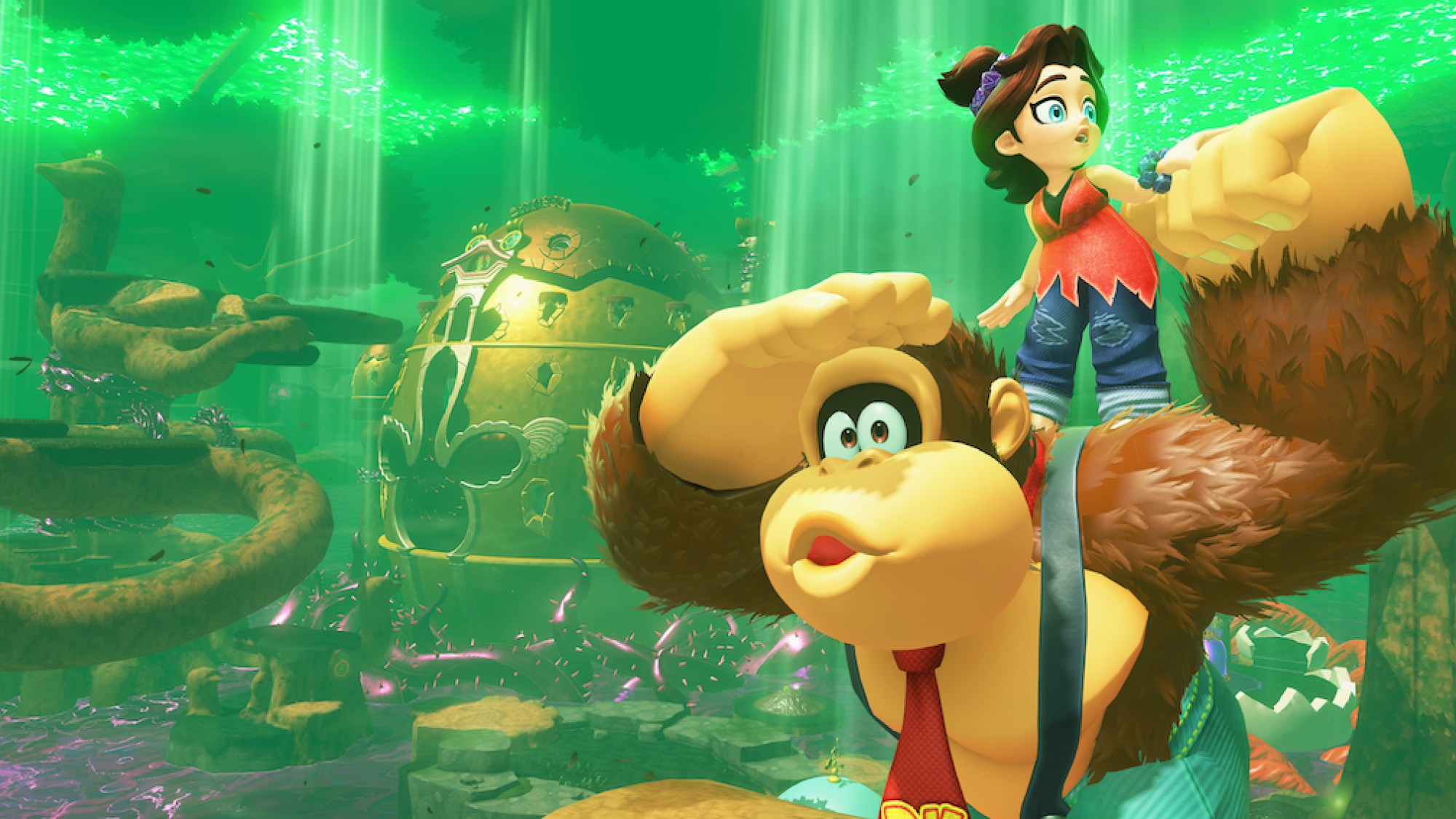
The forest level is great.
Credit: Nintendo
One major reason why Super Mario Odyssey was so well-regarded is that its basic platforming mechanics are gorgeously intuitive and versatile. Bananza is no different.
The simple act of moving from place to place as DK is a great time in and of itself. He’s got a great roll move that you can use to pick up speed either on the ground or in the air, and you can even punch in the middle of a roll. DK can also climb most vertical surfaces with no limitations, creating lots of fun level design opportunities that the game definitely takes advantage of. Animations flow together beautifully so nothing ever feels rigidly mechanical.
Admittedly, it takes about half an hour to get used to how it all works. There are four face buttons on a Switch 2 controller, and three of them are dedicated to different types of punches here. It just doesn’t control quite like any other recent big-name platformer I’m aware of. But once you get the hang of it, it feels incredible to effortlessly bound around these levels in a way that feels appropriately animalistic.
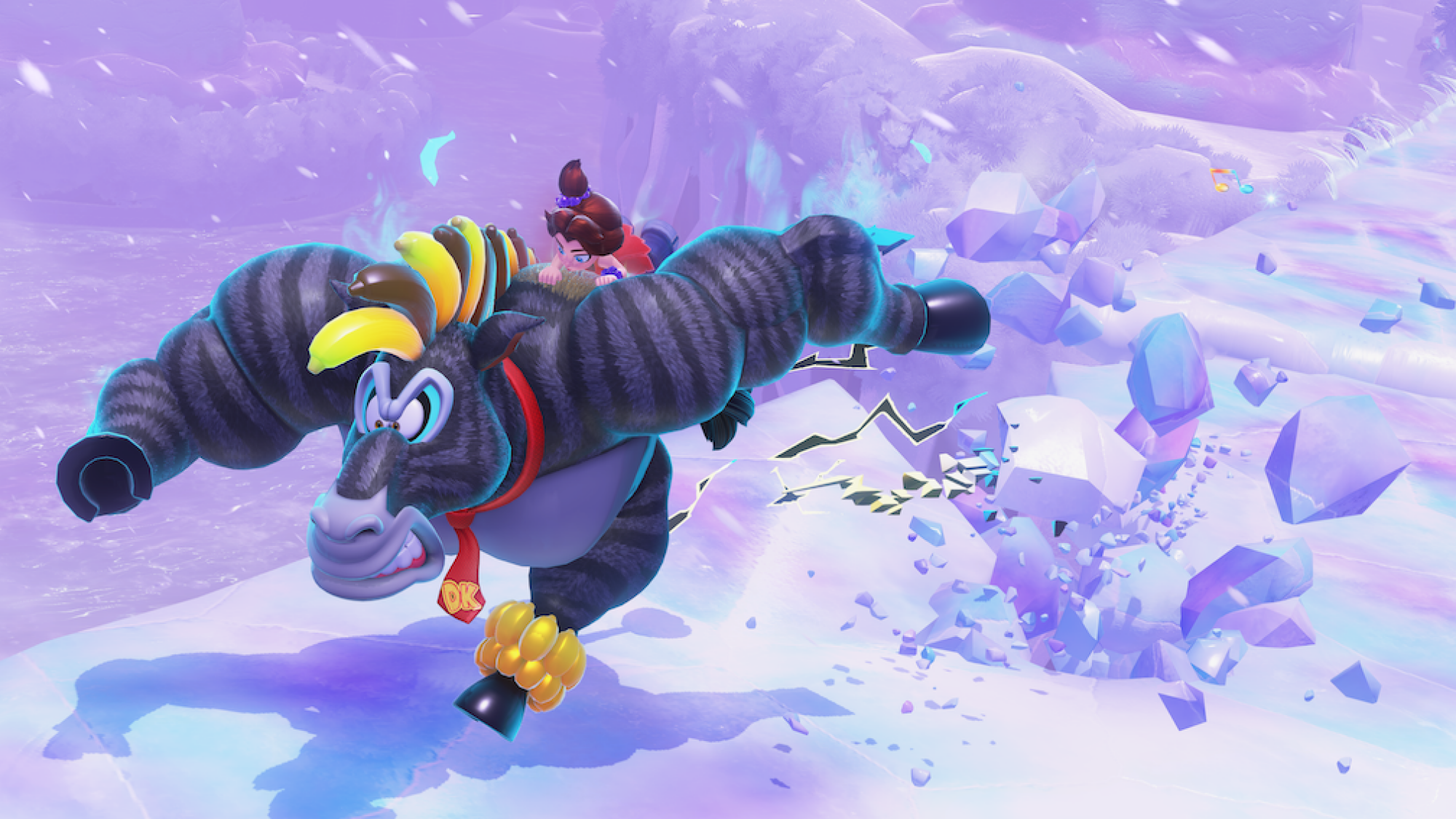
Sorry to Bother You (2018).
Credit: Nintendo
Pauline isn’t just a cosmetic partner for Donkey Kong, though, as her singing abilities allow for the use of Bananza forms. These transform Donkey Kong into different animals (such as a swole zebra or a beefy ostrich) with different use cases. The Zebra can run really fast, making it perfect for crossing platforms that crumble beneath your feet, while the ostrich can glide over large gaps. You can even switch between forms on the fly for fun platforming combo opportunities.
Bananza forms add a lot of great variety to Bananza’s moment-to-moment action, but I wish I could say the same for the game’s upgrade system. There’s a very basic skill tree here that includes passive upgrades for DK and his various Bananza forms, as well as some very useful abilities you can only unlock there. You unlock skill points by collecting Banandium Gems, which is admittedly a smart way to incentivize thorough exploration.
Still, something about this just didn’t sit quite right with me. It feels a little tacked on, and many of the upgrades feel like things you should just have access to by default. Bananza forms in particular feel underpowered when first unlocked, which is a weird and disappointing dynamic for a 3D platformer. I don’t think the presence of the skill tree or its shortcomings will be enough to significantly hinder anyone’s enjoyment of Bananza, but I also can’t imagine it being anyone’s favorite part of the game, either.
Bananza one-ups Mario Odyssey in one key area
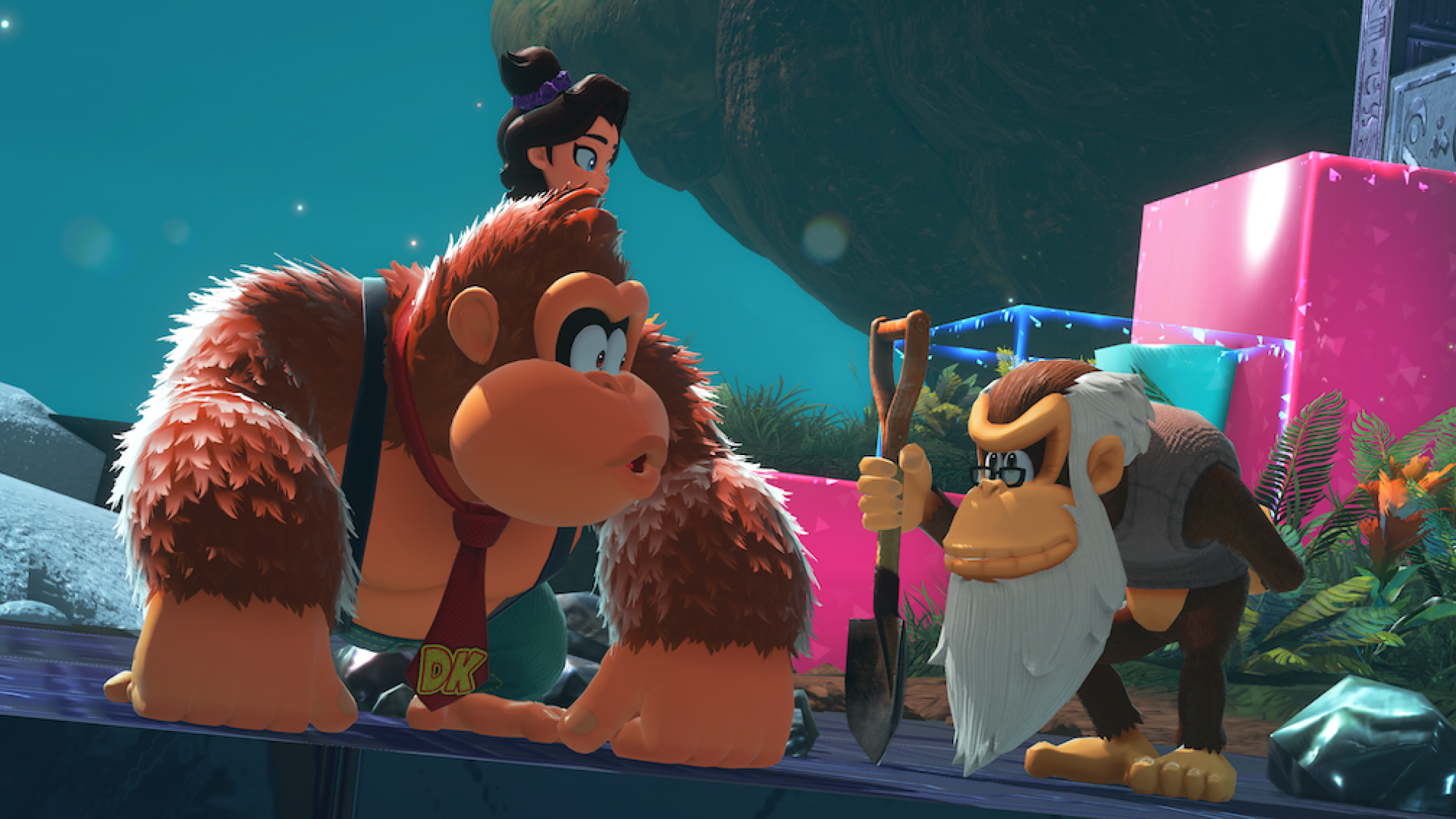
Hey, I know that guy!
Credit: Nintendo
I loved Mario Odyssey, but I had (and continue to have) a major hang-up with it: The pacing is nuts. Mario’s first trip through most of the game’s levels is generally linear and a little rushed, with the expectation that you’ll go back and clear them out later after you’ve left for the next story beat. It created a strange feeling of being pushed through the game faster than I would have liked.
Bonanza is not a significantly longer game by any stretch of the imagination, clocking in at 13 hours before I saw the end credits in my playthrough. But it feels much more satisfying to me because, for the most part, you can see all of a given level the first time you go there. There is a linear critical path through them all, but there are also tons of fun side activities to do and (almost) nothing feels like it’s off-limits or being held back for an endgame collectible hunt.
As a result, I felt way more fulfilled when I saw those end credits, even though I knew I would continue playing the game because I have a sickness that can only be cured by collecting shiny things in 3D platformers. I’ll need more time to ruminate on whether or not I think Bananza is a better game overall than Odyssey, but in this regard, it certainly is.
I should also note before we’re finished here that Bananza does have one more tiny little problem: performance. For the most part, the game runs at a nearly locked 60 frames per second, but there are occasional bits of slowdown. In my experience, almost all of these occurred during moments when I didn’t actually have control over DK, like during short transitional cutscenes. It does rear its head during some more intense gameplay sequences, though overall, I didn’t find it horribly distracting at any point.
Is Donkey Kong Bananza worth it?
There’s so much I haven’t even gotten to, such as the outstanding soundtrack (Pauline’s vocal themes in particular are killer) or the abundance of incredibly fun one-off challenge levels that you can find scattered around each world. Honestly, I’d rather you all experience those things for yourselves because I think Bananza is absolutely a worthwhile investment for any Switch 2 owner. You likely already knew that and didn’t need me to tell you.
It’s not only the first good 3D platformer starring Donkey Kong, it’s just a damn good one in its own right thanks to a unique set of mechanics that make it more about punching than jumping. Combine that with clever level design and a wonderfully charming pair of heroes at the center of the story, and you get the Switch 2’s first stone-cold banger.
